
HOME
INTRO
SYMBOLS
ALMANAC
ECONOMY
GEOGRAPHY
STATE MAPS
PEOPLE
FORUM
NEWS
COOL SCHOOLS
STATE QUIZ
STATE LINKS
BOOK STORE
MARKETPLACE
GUESTBOOK
CONTACT US


You may double left-click on a word on this page to retrieve its definition. Tweet Follow
American Folk Dance of the State of Illinois

Traditional Square Dance Musicians

6 State American Folk Dance: Square Dance
Posters and Photographs
Harry and Doris Jackson, of Ellis Grove, were at the head of the campaign to name the square dance the official American folk dance of the State of Illinois. And, of course, at their back was the State Council of Square Dance Associations representing over 12,000 Illinois square dancers belonging to 212 clubs across the state. They all had their fingers crossed.
In compliance with a mandate from the United Square Dancers of America, Inc. to designate the square dance the official state folk dance of 2/3 of the states before another attempt would be made at the national level to name the square dance the official folk dance of the United States of America, they were determined to do their part.

Saturday Night Square Dancing (1942)
When State Representative Bruce Richmond introduced House Bill No. 3117 (HB3117) in the Illinois General Assembly on March 7, 1990, it wasn't clear how far the proposal would go. Senator Ralph Dunn was prepared to guide the bill through the Senate after approval in the House of Representatives. All were thinking positively.
Assigned to the Rules Committee, off to a slow start, HB3117 was further assigned to the Agricultural Committee on March 28 where it languished for over a month. An amendment, unknown at this time, was withdrawn and the bill eventually received a unanimous "Do pass" from the Committee.
There were dissenters for reasons perhaps most ably expressed by Eric Zorn, on April 13, 1990 in The Chicago Tribune. In an opinion titled " The Thought Of An Official Folk Dance Sends Him Reeling, Zorn echoed folklorists, historians, and traditionalists across the country who opposed the campaigns of modern western-style dance clubs to first, push to make the square dance the official folk dance of the U.S.A., and second, upon failure to accomplish this goal, lean on states to so designate in a strategy to exert additional pressure at a national level. Read more...
"But my kind of square dancing isn't State Council capital-"S" Square capital-"D"-Dancing. Mine is simple, old-fashioned and based on rural and mountain-community barn dances; theirs, which is better known as modern western or club square dancing, is an intricate, highly codified style of dance, usually done in faux-cowboy attire, in which nearly all of the traditions are recent innovations without significant roots in Illinois."
(Zorn, "The Chicago Tribune", 1990)
Evidently dissenters were no match for the powerful dance club crowd and, on May 9, 1990, House Bill No. 3117 was approved by the Illinois House of Representatives and passed on to the Senate for consideration. Senator Ralph Dunn was ready to guide HB3117 through the Senate.
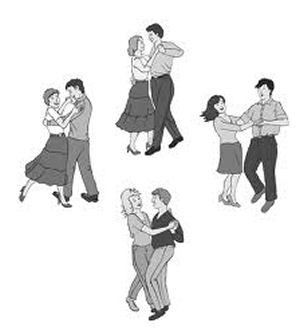
National Folk Dance: Square Dance (1982-1983)
After about a month, on June 7, 1990, HB3117 had gained additional sponsors and garnered a unanimous positive response from the Senate Executive Committee.
On June 21, HB3117 was approved by a majority vote of the Illinois State Senate. The next and probably final stop, on the way to Illinois officialdom was the governor's desk.
The month of June ended and 1990 Fourth of July celebrations were left behind in memory. The approved bill had not been forwarded to the governor until July 20th. The dog days of summer passed as July turned into August.
Then, on August 17, 1990, Governor James R. Thompson made his way down to the Illinois State Fair grounds. There, in the Twilight Ballroom on Central Avenue he signed House Bill No. 3117 designating the square dance Illinois' official American folk dance.
Among other things, Governor Thompson remarked:
"Square dancing is as endemic to Illinois as the prairie plants that border our agricultural landscape."
"Music and dance have played an important role in the lived of Illinoisans from the earliest days of civilization."
"It is fitting that we recognize the significance of our particular regional favorite, the square dance."
(Telegraph capital bureau, "The Telegraph", 1990, p. A-8) (Associated Press, "The Free Lance-Star", 1990, p. 27)
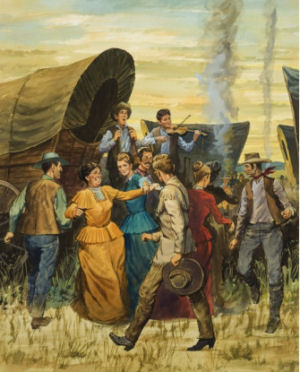
Illinois State American Folk Dance: Square Dance
Posters and Photographs
Eighteen years later, in 2008, Harry and Doris Jackson were among the first inductees into The State Council of Illinois Square Dance Associations' Hall of Fame.
Each recipient receives a Hall of Fame Badge to wear, a plaque to keep and a picture placed in the traveling Hall of Fame display case.
("Discover Illinois Square Dancing", 2016)
The Jacksons had served as Southern Vice Presidents and Presidents of SCISDA and, of course, spear headed the drive to designate the square dance the official American folk dance of Illinois.
The square dance is a popular type of folk dance in the United States. This dance for four couples, or groups of four couples, is performed in a compact framework of a square, each couple forming a side. Traditionally accompanied by a fiddle, accordion, banjo and guitar, the couples perform a variety of movements prompted by the patter or singing calls (instruction) of a "caller". Cooperative movement is the hallmark of well-executed square dancing.
Square dancing is to be distinguished from related dances called contra or longways dance where couples stand double file in a line and from round dances where couples stand in a circle. The origin of the square dance can be traced to English derivation and to the stately French cotillion performed in square formation that was popular at the court of Louis the fifteenth later replace by the quadrille (another square dance).
According to the Illinois Blue Book 2013-2014:
State Dance - Square Dance: In 1990, a bill designating the square dance the official state dance was signed into law. The square dance, first associated with the early American settlers, has been in recorded history since 1651.
(Illinois Blue Book, 2004, p. 577)
A brief description of the efforts to declare the square dance the national folk dance of the United States of America can be found here.
Illinois Law
The following information was excerpted from the Illinois Compiled Statutes, Chapter 5, Section 460/65.
CHAPTER 5. GENERAL PROVISIONS
(5 ILCS 460/) State Designations Act.
(5 ILCS 460/65) (from Ch. 1, par. 2901-65)
Sec. 65. State folk dance. The dance known as the Square Dance is designated the American Folk Dance of the State of Illinois.
(Source: P.A. 87-273.)
Sources...
Associated Press. "Square Dance Gets Status in Illinois." The Free Lance-Star. The Free Lance-Star. Web. 11 Feb. 2016.
"Harry & Doris Jackson – 2008." Discover Illinois Square Dancing. The State Council of Illinois Square Dance Associations, Inc. Web. 11 Feb. 2016.
Illinois Blue Book. 2003-2004 ed. Springfield: Illinois Secretary of State, 2004. Illinois Digital Archives. Illinois Secretary of State. Web. 2005 Jan. 18.
"Illinois Compiled Statutes." Illinois General Assembly. State of Illinois. Web. 2 Jan. 2004.
"Illinois now has an official folk dance." The Daily Herald [Arlington Heights] 9 Mar. 1990, News 1 sec.: 4. NewsPaperArchive.com. Web. 11 Feb. 2016.
Richmond, Bruce. "HB-3117." FINAL Legislative Synopsis of the 1990 Session of the Eighty-sixth General Assembly, State of Illinois III, (1991): 1518. Print.
Shearer, Benjamin F. and Barbara S. State Names, Seals, Flags and Symbols: A Historical Guide Third Edition, Revised and Expanded. Westport, Conn: Greenwood Press, 3 Sub edition, 2001.
"Square Dance May Become Official." The Daily Herald [Arlington Heights] 9 Mar. 1990, News 1 sec.: 4. NewsPaperArchive.com. Web. 11 Feb. 2016.
Telegraph Capital Bureau. "Square Dance Becomes Official for Illinois." The Telegraph. [Alton] 19 Aug. 1990, sec. A: 8. NewsPaperArchive.com. Web. 11 Feb. 2016.
Zorn, Eric. "The Thought Of An Official Folk Dance Sends Him Reeling." The Chicago Tribune. The Chicago Tribune, 13 Apr. 1990. Web. 11 Feb. 2016.
Additional Information
Square Dancing 101: Square dancing basic including positions, formations, moves, and a glossary.
Video Square Dance Lessons Online: Video Square Dance Lessons Online and on DVD from Cyberpoint Marketing, LLC.
A Brief History of Square and Round Dancing: by Herb Egender.
Square Dancing: The Historical Geography of an American Folk Custom: by Richard M. MacKinnon, Allan Hancock College, Santa Maria, California.
Square Dance History Project: Website devoted to the documenting the history of square dancing with historical documents and an emphasis on imagery as much as possible.
History and Heritage of Modern American Square Dancing: A summary of the essays by Dorothy Shaw, Bob Osgood and Kenny Reese.
The State Folk Dance Conspiracy: Fabricating a National Folk Dance: by Judy Mangin - Originally published in the Old-Time Herald, v.4(7) p.9-12, Spring 1995.
National Folk Dance Effort Moves Forward: We're On Our Way Now, So Let's Make a Lot of Noise!: United Square Dancers of America National Folk Dance Committee.
The Square Dance Legislation Collection: American Folklife Center 1984/024, Compiled by Michelle Forner, Library of Congress, Washington DC, December 1994
Official website: The State Council of Illinois Square Dance Associations (SCISDA).
State dances: Complete list of official state dances from NETSTATE.COM
More symbols & emblems: Complete list of official Illinois state symbols from NETSTATE.COM.
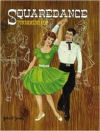
Square Dance Fundamentals
John W. Jones
Square Dance Fundamentals, John W. Jones. 208 pages. Publisher: BookSurge Publishing (February 5, 2007)
While there have been countless fun books written on square dancing, Squaredance Fundamentals was the first to cut to the chase. There is no interesting history of square dancing, there are no entertaining anecdotes, just the nuts and bolts of how to square dance. Revolutionary illustrations show the dancer’s point of view, not just the spectators’ viewpoint. Dancers can, without turning on their heads, glean from the detailed illustrations exactly what they need to be doing with their hands, feet, etc. Each dancer can effortlessly grasp the material and easily retain it. Renowned master caller/teacher, Marshall Flippo, assiduously assisted the author in establishing the very first guidelines for standardized “Basic Maneuvers” which would enable square dancers to dance gracefully with any group, anywhere.
No one shows you better how to execute the maneuvers than John W. Jones with his super simplified instructions and state-of-the-art illustrations in Squaredance Fundamentals - the gold standard for over 37 years.
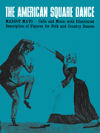
The American
Square Dance
Margot Mayo
The American Square Dance, by Margot Mayo. 116 pages. Publisher:Music Sales American (September 1, 2006)
You can have fun square dancing and you'll learn how to dance the figures and even learn how to call a square dance with Margot Mayo's classic manual, The American Square Dance. Here is the basic book for square dancers containing all of the essentials for many hours of enjoyment. An illustrated glossary of square dance terms shows all of the basic square dance figures – promenade, allemande left, do-si-do, etc. Complete instructions, calls and illustrated figures for 13 of the most popular American square dances appear, plus the music all ready for your pianist and fiddlers to play.
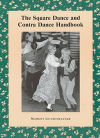
The Square Dance and
Contra Dance Handbook
Margot Gunzenhauser
The Square Dance and Contra Dance Handbook: Calls, Dance Movements, Music, Glossary, Bibliography, Discography, and Directories, by Margot Gunzenhauser. 320 pages. Publisher: McFarland & Company, Inc., Publishers; annotated edition edition (July 28, 2010)
This comprehensive guide to traditional style square and contra dancing, sometimes referred to as "country dancing," covers both music and style and gives background information on various dance types and calling techniques. Ninety dances, presented in chapters according to type (mixers, progressive circles, contra, Southern mountain style, squares and others), in a wide variety of formations are described with drawings and diagrams for many of the movements. A glossary of terms, a directory of addresses (organizations; vendors of books, recordings and audio equipment; and dance camps), and an annotated discography and bibliography are also provided.
A glossary of terms, a directory of addresses (organizations; vendors of books, recordings and audio equipment; and dance camps), and an annotated discography and bibliography are also provided.
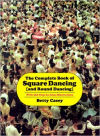
The Complete Book
of Square Dancing
(and Round Dancing)
Betty Casey
The Complete Book of Square Dancing (and Round Dancing), by Betty Casey. 208 pages. Publisher: University of North Texas Press (June 1, 2000)
This book includes: 50 basic movements, 35 advanced movements, variations, dances that are a part of the American heritage, Contra and Round Dances, polkas and reels, and calls, past and present.
“Square dancing is friendship set to music,” says author Betty Casey. Just take four couples, old or young, put ’em on a good floor, turn on the music, and you’re all set. Whether you’ve done it before or you’re just starting out, this book tells you everything you need to know—85 basic movements used all over the world, the spirited calls unique to square dancing, the costumes and equipment that are best, and music (from “Red River Valley” to “Mack the Knife”) that will set your feet in motion.
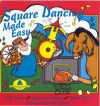
Square Dancing
Made Easy
Square Dancing Made Easy, Grade level: K-6. Audio CD (September 1, 1995), Number of Discs: 1, Label: Educational Activities, Inc.
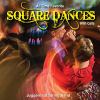
All Time Favorite
Square Dances
All Time Favorite Square Dances with Calls, Audio CD (September 8, 2009), Number of Discs: 1, Label: KADO, Run Time: 60 minutes.

Square Dance Music
& Calls
Square Dance Music & Calls, Audio CD (November 21, 2006), Number of Discs: 1, Label: Collectables Records.
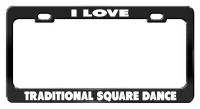
Black Metal
License Plate Frame
I LOVE TRADITIONAL SQUARE DANCE Black Metal Car Accessories License Plate Frame, This high quality license plate frame is made of metal, and it's the best quality item of its kind in the market. The lettering and art work are done by waterproof vinyl on the license plate frame and it will last for many years without any damage. It will not get brittle or cracked. It fits on all USA and Canada vehicles. It measures 12.5" X 6.5" and is durable to last under all weather conditions.
- Heavy Duty High Quality Metal License Plate Frame.
- Perfect Gift idea And Easy Installation.
- Rust, Corrode And Fade Free For Many Years.
- Fits all US and Canada License Plates.
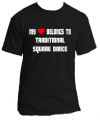
Traditional Square
Dance T-Shirt
MY HEART BELONGS TO TRADITIONAL SQUARE DANCE, This is a high quality pre-shrunk t-shirt that will not shrink or fade. It's comfortable, casual and loose fitting and will quickly become one of your favorites. It wears and looks well on anyone. It is cured with a heat treatment process to ensure lasting durability.
Brand New High quality preshrunk tee-shirt that will not shrink or fade. Double-needle stitched hemmed sleeves and bottom. Highest quality printing materials. 50% Cotton, 50% Polyester preshrunk blend. Soft, comfortable and weighs 6 oz.
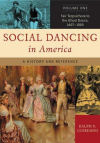
Social Dancing in America: A History and Reference (Volume One), by Ralph G. Giordano. 380 pages. Publisher: Greenwood (November 30, 2006)
Social Dancing in America examines the role of social dancing in daily life from the first settlements in 1607 through the birth of the nation in 1776 and into the beginning of the 21st century. This two-volume set provides a history of American social dances including the Virginia Reel, Square Dancing, the Lindy Hop, Rock 'n' Roll, the Twist, Disco, Breakdancing, and Hip-Hop. Social Dancing in America places social dancing in a historical, social, cultural, and political context.
Volume 1 explores the integral role that social dancing played in the lives of Americans from the first settlements in 1607 through the 19th century, often in the most unlikely of ways. For example, readers may be surprised to learn that George Washington was a well-known aficionado of social dancing, and that he incorporated the etiquette and manners of dances such as the Minuet as a means of diplomacy to secure European allies during the Revolutionary War. After his death, Americans continued to celebrate his birthday with a grand ball that included dancing.
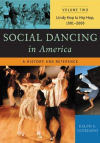
Social Dancing in America: A History and Reference (Volume Two), by Ralph G. Giordano. 428 pages. Publisher: Greenwood (November 30, 2006)
Volume 2 places social dance in a 20th-Century context, illustrating how social dancing itself paralled the social, economic, and cultural traditions of each era. For example, segregation and the Jim Crow mentality was cemented in place all over the United States, and for much of the century, dancing and dance halls were strictly segregated. Segregation forced a mass migration north, and with it came the transformation of Delta Blues music into an American original—Jazz. Jazz gave birth to the Charleston, and later evolved into Swing, which created the Lindy Hop. Later, with the advent of television, programming such as American Bandstand, Soul Train, Dance Fever, and MTV greatly influenced dance styles and modern trends such as Rock 'n' Roll, Freestyle, Disco, Breakdancing, and Hip-Hop.

